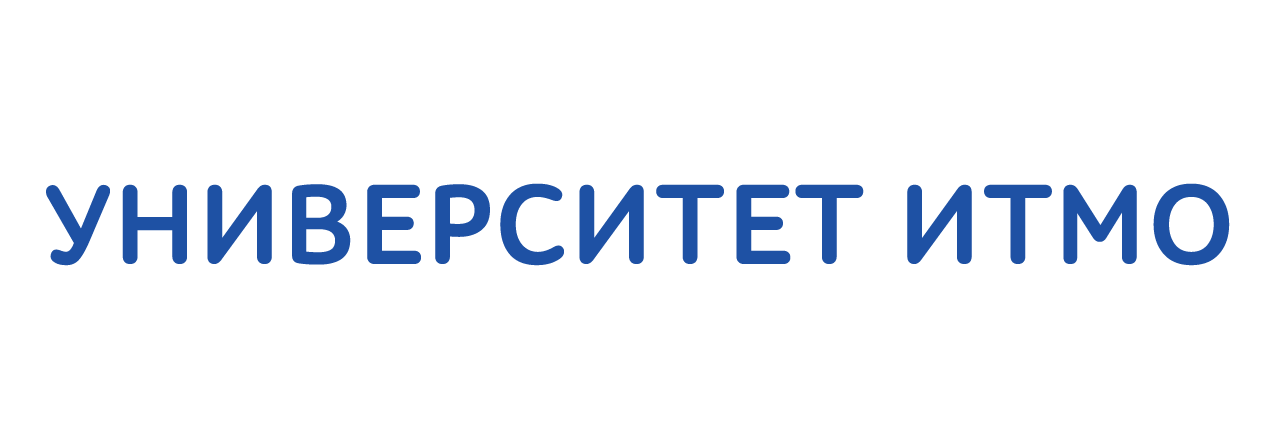Меню
Публикации
2025
2024
2023
2022
2021
2020
2019
2018
2017
2016
2015
2014
2013
2012
2011
2010
2009
2008
2007
2006
2005
2004
2003
2002
2001
Главный редактор

НИКИФОРОВ
Владимир Олегович
д.т.н., профессор
Партнеры
doi: 10.17586/2226-1494-2025-25-3-466-474
УДК 004.89
Обнаружение мошенничества при финансовых транзакциях с использованием модели SMOTENN
Читать статью полностью
Язык статьи - английский
Ссылка для цитирования:
Аннотация
Ссылка для цитирования:
Сямсуддин И., Омса С., Рустам А., Хасан Д. Обнаружение мошенничества при финансовых транзакциях с использованием модели SMOTENN // Научно-технический вестник информационных технологий, механики и оптики. 2025. Т. 25, № 3. С. 466–474 (на англ. яз.). doi: 10.17586/2226-1494-2025-25-3-466-474
Аннотация
Финансовая индустрия играет важную роль в национальном экономическом росте. Из-за своей критической функции банки стали главными целями для многочисленных финансовых преступлений. Среди них мошеннические финансовые транзакции считаются серьезной проблемой в финансовой индустрии. Традиционные подходы часто критикуются за неэффективность в борьбе с мошенничеством в сфере финансов; поэтому подходы машинного обучения имеют потенциальный ответ для решения этой проблемы. Целью данного исследования является внедрение новой модели Synthetic Minority Over-sampling Technique с Neural Network (SMOTENN) для точного раннего обнаружения кибермошеннических действий в финансовых транзакциях. В работе используются два метода: алгоритм нейронной сети применяется к набору данных, содержащему несбалансированные классы; набор данных первоначально балансируется с помощью алгоритма SMOTE, а затем алгоритма нейронной сети SMOTENN. Обе модели оцениваются с использованием метрик Area Under the Curve, F1-score, точность, полнота, специфичность, достоверность и время обработки. Сравнительный анализ показывает, что эффективность новой модели SMOTENN со сбалансированным набором данных значительно выше, чем у подхода на основе нейронной сети с несбалансированным набором данных. Это свидетельствует об эффективности новой модели SMOTENN в обнаружении мошеннических действий в финансовых транзакциях.
Ключевые слова: финансовая индустрия, банк, финансовое мошенничество, несбалансированный набор данных, SMOTE, нейронная сеть
Благодарности. Автор благодарит за поддержку Политехнический институт Негери Уджунг Панданг, Индонезия, и Университет Мухаммадии Макассар, Индонезия.
Список литературы
Благодарности. Автор благодарит за поддержку Политехнический институт Негери Уджунг Панданг, Индонезия, и Университет Мухаммадии Макассар, Индонезия.
Список литературы
- Hidajat T. Rural banks fraud: a story from Indonesia // Journal of Financial Crime. 2020. V. 27. N 3. P. 933–943. https://doi.org/10.1108/jfc-01-2020-0010
- Syahria R. Detecting financial statement fraud using fraud diamond (A study on banking companies listed on the Indonesia Stock Exchange period 2012-2016) // Asia Pacific Fraud Journal. 2019. V. 4. N 2. P. 183–190. https://doi.org/10.21532/apfjournal.v4i2.114
- Nabila P., Omsa S., Bravely I. Financial performance analysis of KSP Berkat Bulukumba in year 2018-2022 // AKUNSIKA: Jurnal Akuntansi dan Keuangan. 2025. V. 6. N 1. P. 10–20. https://doi.org/10.31963/akunsika.v6i1.4902
- Tjambolang T.A., Radjab E., Hamid A. Financial technology dan gaya hidup dalam perilaku keuangan mahasiswa Politeknik Negeri Ujung Pandang // Proc. of the Seminar Nasional Terapan Riset Inovatif (SENTRINOV). 2023. V. 9. N 2. P. 355–362.
- Omsa S., Hasan D., Bravely I., Suryadi A.S., Ischika A.P. Peningkatan kinerja keuangan “Anisah Catering” melalui peningkatan manajemen usaha mikro // Proc. of the Seminar Nasional Terapan Riset Inovatif (SENTRINOV). 2023. V. 9. N 3. P. 66–73.
- Lim K.S., Lee L.H., Sim Y.W. A review of machine learning algorithms for fraud detection in credit card transaction // International Journal of Computer Science & Network Security. 2021. V. 21. N 9. P. 31–40.
- Ali A., Abd Razak S., Othman S.H., Eisa T.A.E., Al-Dhaqm A., Nasser M., Elhassan T., Elshafie H., Saif A. Financial fraud detection based on machine learning: a systematic literature review // Applied Sciences. 2022. V. 12. N 19. P. 9637. https://doi.org/10.3390/app12199637
- Syamsuddin I., Hwang J. The application of AHP model to guide decision makers: a case study of e-banking security // Proc. of the Fourth International Conference on Computer Sciences and Convergence Information Technology. 2009. P. 1469–1473. https://doi.org/10.1109/iccit.2009.251
- Gupta A., Lohani M.C., Manchanda M. Financial fraud detection using naive bayes algorithm in highly imbalance data set // Journal of Discrete Mathematical Sciences and Cryptography. 2021. V. 24. N 5. P. 1559–1572. https://doi.org/10.1080/09720529.2021.1969733
- El-Naby A., Hemdan E.E.D., El-Sayed A. An efficient fraud detection framework with credit card imbalanced data in financial services // Multimedia Tools and Applications. 2023. V. 82. N 3. P. 4139–4160. https://doi.org/10.1007/s11042-022-13434-6
- Tebala D., Marino D. Companies and artificial intelligence: an example of clustering with orange // Studies in Systems, Decision and Control. 2023. V. 222. P. 1–12. https://doi.org/10.1007/978-3-031-33461-0_1
- Raqib F., Dunne M., Gurney J., Harle D.E., Sivapalan T., Sabokbar N., Bhogal-Bhamra G.K. Translational learning with orange data mining // Proc. of the 11th International Conference on Research Advancement Resilience in the Pandemic Era: A Drive for Innovative Transformation. 2021.
- Ariyanto R., Bone H. Fraud awareness in Indonesian governmental sector: Multi-agency responses // Review of Integrative Business and Economics Research. 2020. V. 9. N 2. P. 209–222.
- Ikbal M., Irwansyah I., Paminto A., Ulfah Y., Darma D.C. Financial intelligence: Financial statement fraud in Indonesia // Journal of Intelligence Studies in Business. 2020. V. 10. N 3. P. 80–95. https://doi.org/10.37380/jisib.v10i3.640
- Taneja S., Suri B., Kothari C. Application of balancing techniques with ensemble approach for credit card fraud detection // Proc. of the International Conference on Computing, Power and Communication Technologies (GUCON). 2019. P. 753–758.
- Saragih M.G., Chin J., Setyawasih R., Nguyen P.T., Shankar K. Machine learning methods for analysis fraud credit card transaction // International Journal of Engineering and Advanced Technology (IJEAT). 2019. V. 8. N 6 S. P. 870–874.
- Hashemi S.K., Mirtaheri S.L., Greco S. Fraud detection in banking data by machine learning techniques // IEEE Access. 2023. V. 11. P. 3034–3043. https://doi.org/10.1109/ACCESS.2022.3232287
- Tadvi F., Shinde S., Patil D., Dmello S. Real time credit card fraud detection // International Research Journal of Engineering and Technology. 2021. V. 8. N 5. P. 2177–2180.
- Chawla N.V., Bowyer K.W., Hall L.O., Kegelmeyer W.P. SMOTE: synthetic minority over-sampling technique // Journal of Artificial Intelligence Research. 2002. V. 16. P. 321–357. https://doi.org/10.1613/jair.953
- Fernández A., Garcia S., Herrera F., Chawla N.V. SMOTE for learning from imbalanced data: progress and challenges, marking the 15-year anniversary // Journal of Artificial Intelligence Research. 2018. V. 61. P. 863–905. https://doi.org/10.1613/jair.1.11192
- Elreedy D., Atiya A.F., Kamalov F. A theoretical distribution analysis of synthetic minority oversampling technique (SMOTE) for imbalanced learning // Machine Learning. 2024. V. 113. N 7. P. 4903–4923. https://doi.org/10.1007/s10994-022-06296-4
- Veigas K.C., Regulagadda D.S., Kokatnoor S.A. Optimized stacking ensemble (OSE) for credit card fraud detection using synthetic minority oversampling model // Indian Journal of Science and Technology. 2021. V. 14. N 32. P. 2607–2615. https://doi.org/10.17485/ijst/v14i32.807
- Syamsuddin I., Barukab O.M. SUKRY: Suricata IDS with enhanced kNN algorithm on Raspberry Pi for classifying IoT botnet attacks // Electronics. 2022. V. 11. N 5. P. 737. https://doi.org/10.3390/electronics11050737
- Makki S., Assaghir Z., Taher Y., Haque R., Hacid M.S., Zeineddine H. An experimental study with imbalanced classification approaches for credit card fraud detection // IEEE Access. 2019. V. 7. P. 93010–93022. https://doi.org/10.1109/ACCESS.2019.2927266
- Alam T.M., Shaukat K., Hameed I.A., Luo S.H., Sarwar M.U., Shabbir S., Li J.M., Khushi M. An investigation of credit card default prediction in the imbalanced datasets // IEEE Access. 2020. V. 8. P. 201173–201198. https://doi.org/10.1109/access.2020.3033784
- Moro S., Cortez P., Rita P. A data-driven approach to predict the success of bank telemarketing // Decision Support Systems. 2014. V. 62. P. 22–31. https://doi.org/10.1016/j.dss.2014.03.001
- Kawam A.A., Mansour N. Metaheuristic optimization algorithms for training artificial neural networks // International Journal of Computer and Information Technology. 2012. V. 1. N 2. P. 156–161.
- Quiroga F.M. Invariance and same-equivariance measures for convolutional neural networks // CLEI Electronic Journal. 2021. V. 24. N 1 SI. https://doi.org/10.19153/cleiej.24.1.8
- Alla H., Moumoun L., Balouki Y. A multilayer perceptron neural network with selective‐data training for flight arrival delay prediction // Scientific Programming. 2021. V. 2021. P. 5558918. https://doi.org/10.1155/2021/5558918
















